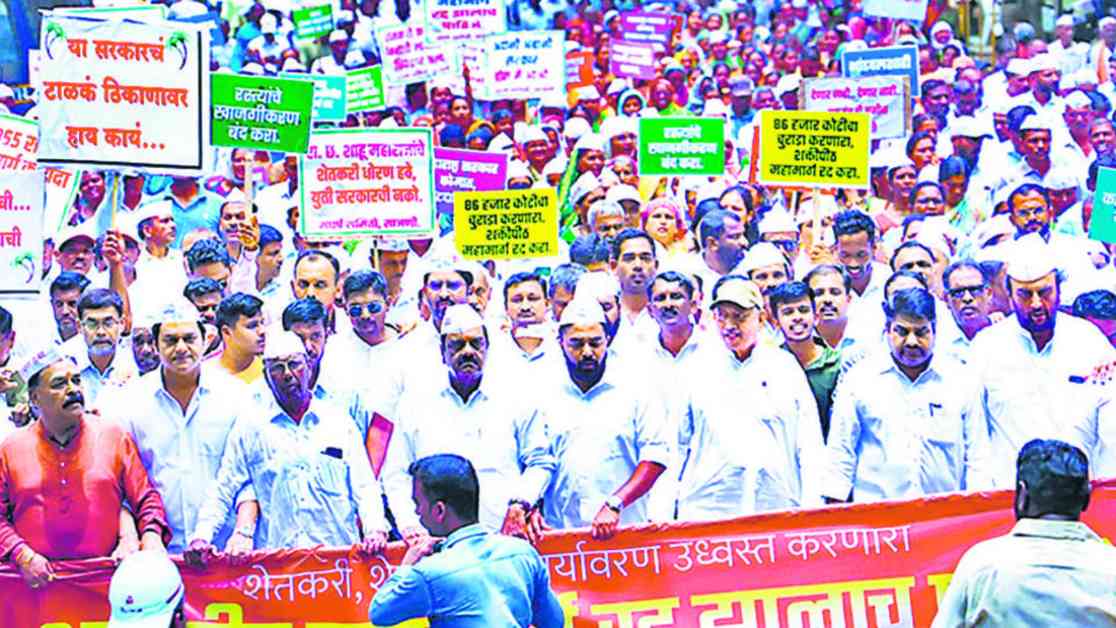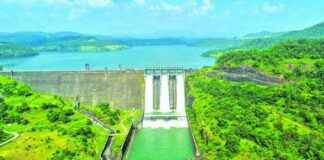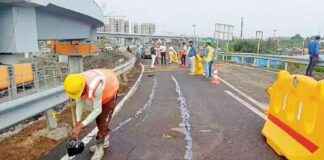MSRDC to Resume Nagpur-Goa Expressway Survey; Protests Expected
The Maharashtra State Road Development Corporation (MSRDC) is gearing up to resume its land acquisition survey for the Nagpur-Goa Shaktipeeth Expressway, an 802-km-long project that has sparked heated opposition from farmers and activists. The proposed expressway, which was put on hold last year due to protests leading up to the state legislative assembly elections, has raised concerns about displacement, loss of fertile agricultural land, inadequate compensation, and a lack of thorough environmental impact studies.
Survey Resumption and Protest Preparations
Following the conclusion of the elections, MSRDC officials have confirmed plans to restart the survey in all districts except Kolhapur. The strongest resistance to the project has been witnessed in Kolhapur, Solapur, and Sangli since June 2024, prompting the government to halt ground activities in September. Out of the 27,000 acres required for the expressway, approximately 9,500 acres need to be acquired from these three districts. A senior official revealed that land acquisition will kick off immediately after the survey’s completion, which is expected in the coming months. The state aims to have the expressway operational by the end of 2029, cutting travel time between Nagpur and Goa in half, from 21 hours to around 10.5 hours.
Challenges and Opposition
The Nagpur-Goa Expressway, if completed, will become Maharashtra’s longest expressway, surpassing the Mumbai-Nagpur Samruddhi Mahamarg. However, the project has drawn criticism from the Congress party, which plans to protest the access-controlled expressway, arguing that it will displace farmers across 12 districts despite existing routes between Nagpur and Goa. Member of Legislative Council Satej Patil has warned of street demonstrations rather than legal battles, with a major protest march scheduled outside the state assembly during the upcoming budget session from March 3 to March 25.
Resistance and Concerns
Opposition to the expressway is particularly strong in Kolhapur and Latur, where farmers have staged protests against the acquisition of farmland. The Swabhimani Shetkari Sanghatana organized a protest in Latur to highlight concerns over the impact on local farmers. Similar resistance was seen during the land acquisition process for the Mumbai-Nagpur Samruddhi Expressway in the past decade. The Nagpur-Goa Expressway is planned to run through Wardha, Yavatmal, Hingoli, Nanded, Parbhani, Latur, Beed, Osmanabad, Solapur, Sangli, Kolhapur, and Sindhudurg, connecting Pavnar near Wardha to Patradevi in North Goa, integrating with the Mumbai-Nagpur Samruddhi Expressway at Pavnar for enhanced connectivity.
Potential Future Developments
During a recent meeting, Maharashtra officials requested permission from Goan authorities to extend the expressway into Goa, specifically near the newly operational Manohar International Airport at Mopa. As plans for the Nagpur-Goa Expressway move forward, tensions are expected to rise between proponents of the project and those advocating for the protection of farmland and communities along the proposed route. The coming months will likely see increased activism, legal battles, and public debates surrounding the impact and necessity of this ambitious infrastructure project.




















